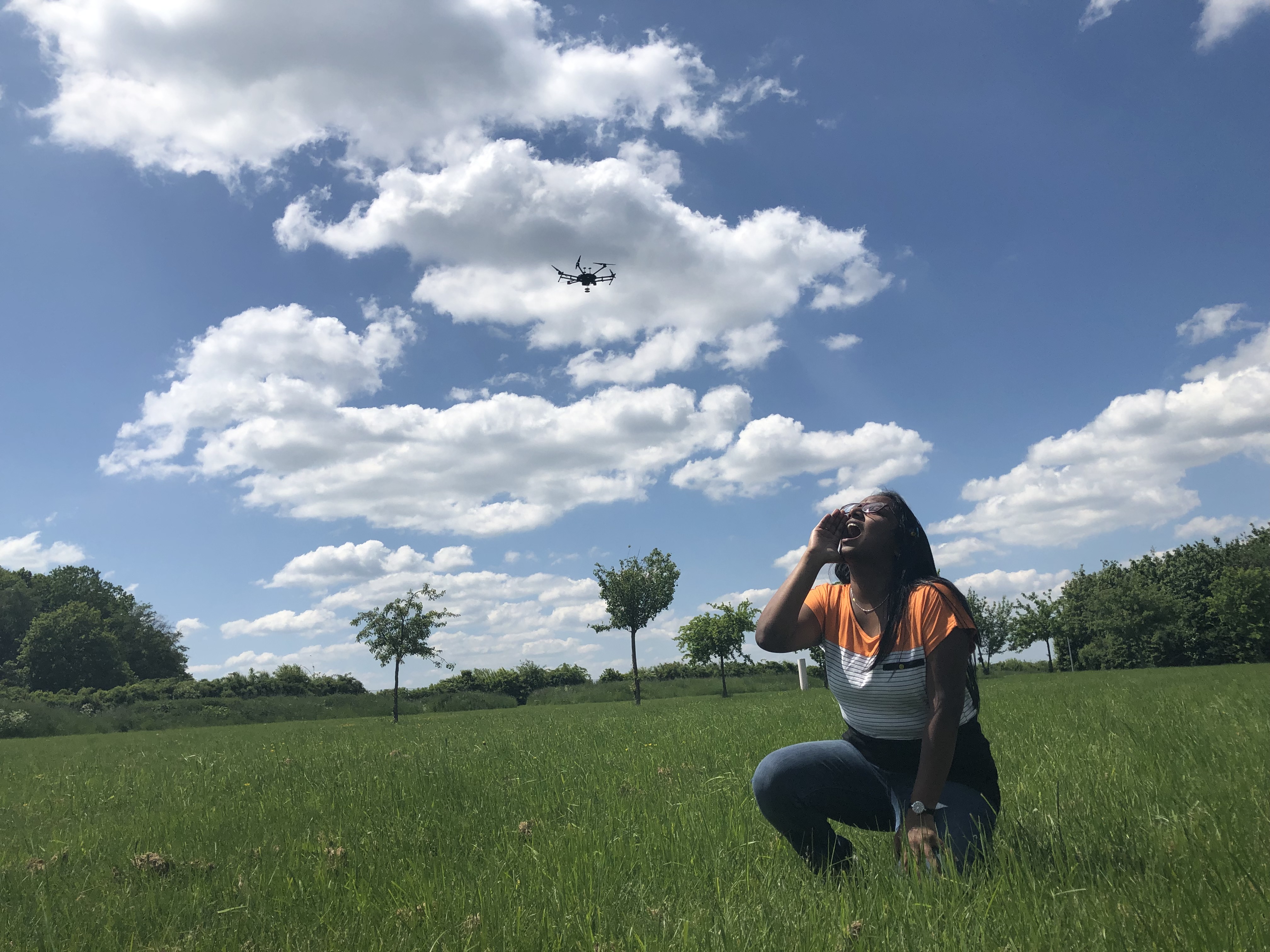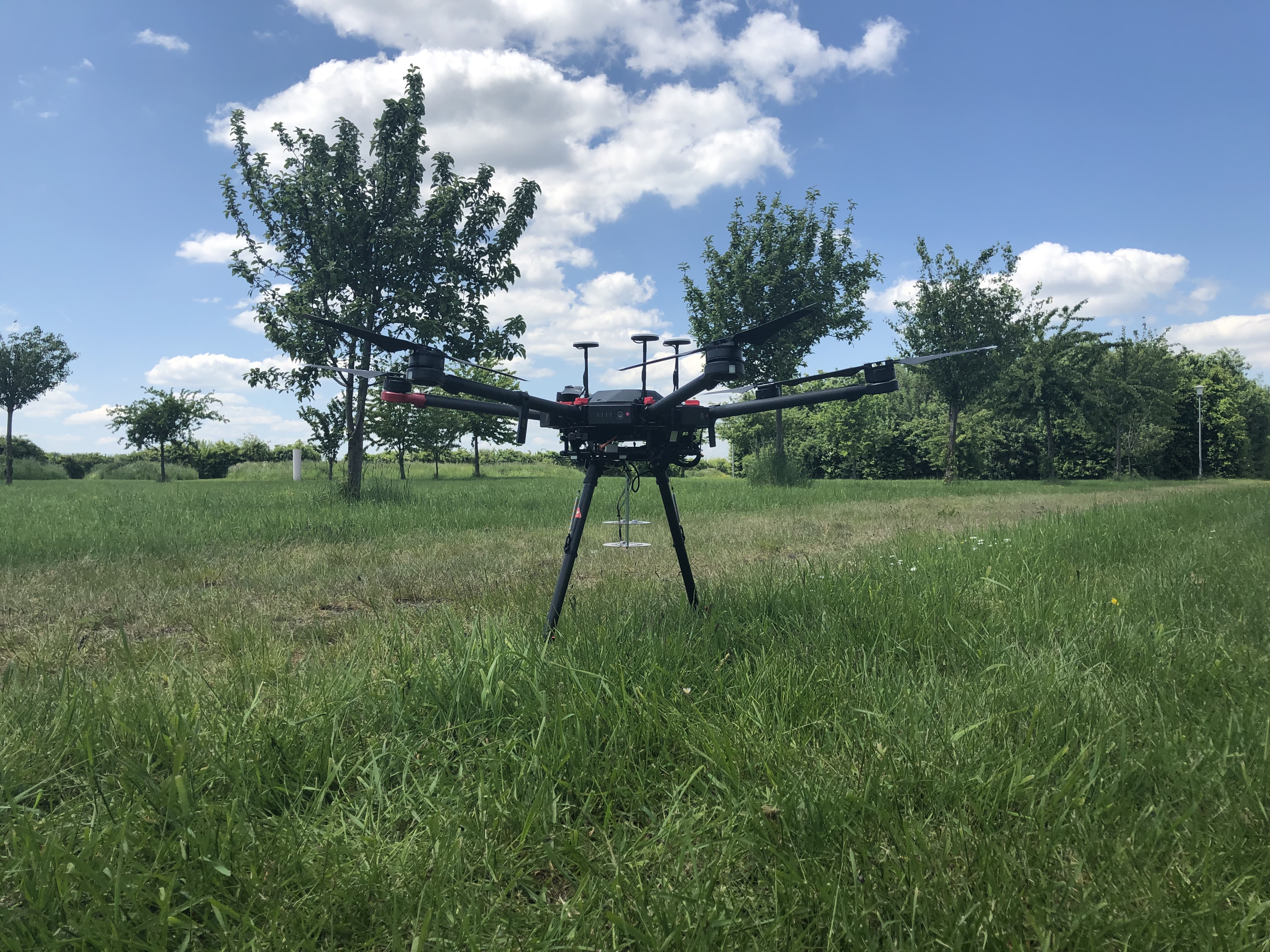After an interview with the Washington Post: FKIE scientist Macarena Varela reports on her drone research to a global audience
Drones equipped with microphone arrays will help rescue workers in disaster areas to find and rescue survivors more quickly. They will detect cries for help and signals from buried victims from the air and simultaneously pinpoint their location. Macarena Varela, a scientist at the Fraunhofer Institute for Communication, Information Processing and Ergonomics FKIE, is developing this technology to help victims in situations where every second counts.



The scientist presented her latest scientific research findings at the 180th Meeting of the Acoustical Society of America, which was held online. Varela described how the unmanned vehicles have been used in disaster situations up to now: »Drones equipped with the latest technology can quickly scout a larger area than rescue workers or sniffer dogs. They can also reach places that are initially inaccessible to first responders and thus provide emergency managers with a good overview of the situation in the crisis area.« Aerial photos are taken to document damage, and some drones are also equipped with a thermal imaging function to find buried victims.
In addition to visual identification, Varela's research approach involves the use of acoustic sensors and clearly defined sound classification to locate people. »We are developing a technology that can definitely save lives in the event of a disaster. In such situations, every minute counts,« says Varela, who was born in Chile and grew up in Canada. For this approach to work, the sensors have to be able to distinguish between calls for help or other human signals and sounds that occur in nature. At the same time, the rotor noise of the drone has to be filtered out so that it does not drown out or change the calls for help picked up by the microphones.
If we consider the scenario of deployment to a disaster area, it is easy to imagine that other environmental noises, such as the noise of helicopters or emergency vehicles, have to be suppressed in order to positively detect the cries of people calling for help.
Using artificial intelligence (AI), the prototype on which Macarena Varela and her colleague Wulf-Dieter Wirth are working should learn not only how to suppress ambient noise, but also sound patterns such as shouting and clapping – in other words, sounds people make when trying to draw attention to themselves in emergency situations. The AI is being trained using a database filled with »impulsive« human sounds, which the scientists are populating beforehand with their own self-recorded calls for help and signal.
Pinpointing the location of potential victims
In order to make the system capable not only of detecting sound events in an emergency, but more importantly of quickly locating people seeking help, the FKIE scientists are arranging the small, but very powerful microphones, in a specific shape: a so-called crow's nest array (CNA) underneath the drone. In combination with modern signal processing techniques (beamforming), this made it possible to precisely track where the sound was coming from with angular accuracy: »So far, we have conducted highly successful tests in open fields. Our goal is to identify the call for help, and determine the location of the potential victim in only a few seconds. Our system can already detect and localize impulsive sounds very precisely,« the scientist says.
But the project is not over yet: the next goal is to equip the drone with a microphone that has an even higher frequency in order to broaden the spectrum of the detailed signals and classify them with even greater precision. At the same time, the plan is to increase the distance from which the drone can detect the sounds. For this purpose, the number of microphones in the array, in this case MEMS microphones, will be increased. Currently, 32 microphones are used, while plans for the subsequent design envisage twice that number. This would also allow for a more precise calculation of the estimated angle of the sound, and even sounds from a greater distance could still be detected in real time. Regarding actual use in disaster areas, Varela envisions the location data of victims being transmitted to emergency teams, who could then identify their precise positions on tablets.
Enquiries from various industry partners and aid organizations working in the field of disaster relief show that the research field she is working on could close an important gap in the search for missing persons. Since her talk at the online conference, Macarena Varela has also been in high demand as an interviewee. Whether on the BBC Science Podcast, in a discussion with the Times or the Washington Post - the scenario of using a drone and acoustic sensors to locate and rescue buried victims is attracting a great deal of interest worldwide.
© Fraunhofer FKIE